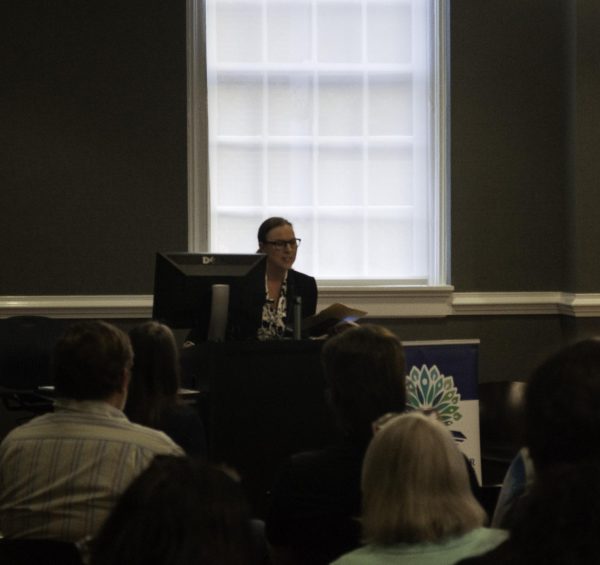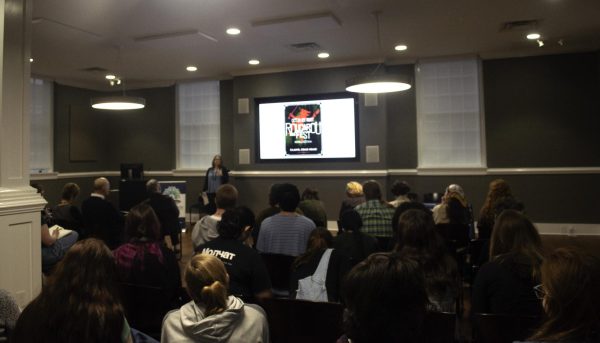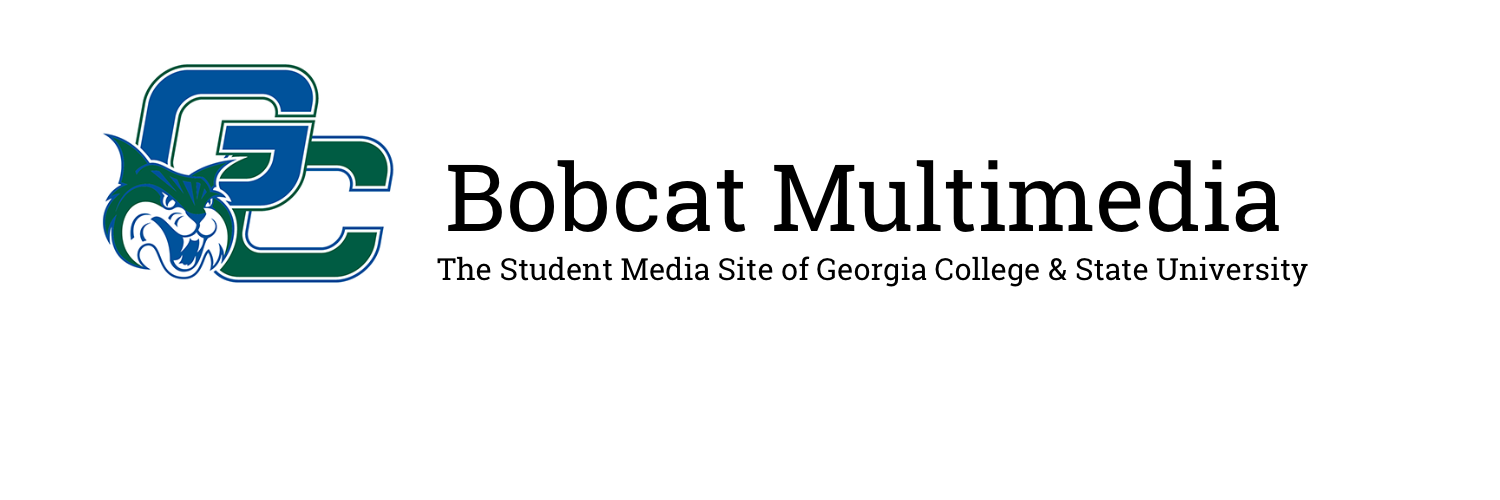

The O’Connor Institute began its Inaugural Southern Gothic Lecture Series on Tuesday, Feb. 4 in the Pat Peterson Museum Education Room where Sara L. Crosby delivered a lecture on “The Rougarou and The Rise of Cajun Ecogothic.”
Crosby, a professor of English at The Ohio State University at Marion, comes from a long line of Cajun ancestry she displays proudly. Grand Isle, a small island nestled on the coast of Louisiana, has been her family’s home since the 1700s. However, Crosby’s generational residence and many others are slowly disappearing.
Louisiana hosts over 10,000 miles of coastal wetland, yet the American oil industry has converted Crosby’s homeland into what she describes as a “petroleum sacrifice zone.” Louisiana’s Coastal Protection and Restoration Authority reports they are the nation’s No. 1 export state and responsible for 90% of outer continental shelf oil and gas.
Over the past 100 years, this has led to land erosion close to the size of Delaware, according to Crosby, destroying livelihoods and habitats. Additionally, the deforestation of cypress trees and the construction of levees and dams have inhibited the wetlands of natural replenishment.
“You should really see it before it goes,” Crosby said to the crowd.
As explained by “Nature Communications,” nearly 75% of Louisiana’s coastal wetlands will be underwater by 2070. The loss of wetlands puts not only natural ecosystems at risk but also increases the state’s exposure to hurricanes, as the coast serves as the first line of defense.
“My family was sharecroppers since before the Civil War, so the land of Louisiana was critical to sustaining my family, and lack of resources is part of why they left,” said Katie Cooper, a political science and philosophy double major, who attended the event. “My mother is from a small town in Louisiana, so I was familiar with part of Cajun culture.”
Voodoo, witchcraft, monsters and the unexplainable have always been placed on the minority populations of Louisiana in racist attempts to instill fear. While many fight to break the stereotype, the Cajun culture has chosen to embrace it to help preserve their beloved wetlands and homes.
The Rougarou is, more or less, a Cajun swamp werewolf, that has been passed down as a folk tradition dating back to the 1800s. Originally deriving from the French words “loup garou,” meaning werewolf, the Rougarou can take on many forms as a shapeshifter. Renditions of it can be seen in popular culture and the emerging ecogothic genre, specifically in horror-related media.
Once a creature of folklore used to scare outsiders, the Rougarou is now a mascot raising awareness about Louisiana’s vanishing wetlands. Since 2012, the Rougarou Fest has been held every October on the weekend before Halloween, inviting both the local bayou community and visitors to engage in advocacy. All proceeds from the festival go to the South Louisiana Wetlands Discovery Center.
Crosby likens the Rougarou to southern Louisiana’s version of Smokey the Bear and assertion of cultural worth.
“I admire how people are taking critical aspects of their culture, like the Rougarou, and strategically using them as symbols to bring awareness to environmental degradation,” Cooper said.
While Crosby remains hopeful about the future and continues to spread awareness of her culture and community, irreversible damage has already been done. Sharing pictures and anecdotes of her great-grandmothers, Crosby revealed that after Hurricane Ida in August 2021, she was forced to sell the home that had been in her family for over 200 years.
“I think we can’t say that there’s no hope unless we’ve actually really tried, and we haven’t actually really tried,” Crosby said. “We’ve been a national sacrifice zone. The damage is not repaired. Let’s actually make the most profitable companies in the history of the world fix, or at least try to fix, what they’ve broken. It requires more than what Louisiana can do on its own.”

